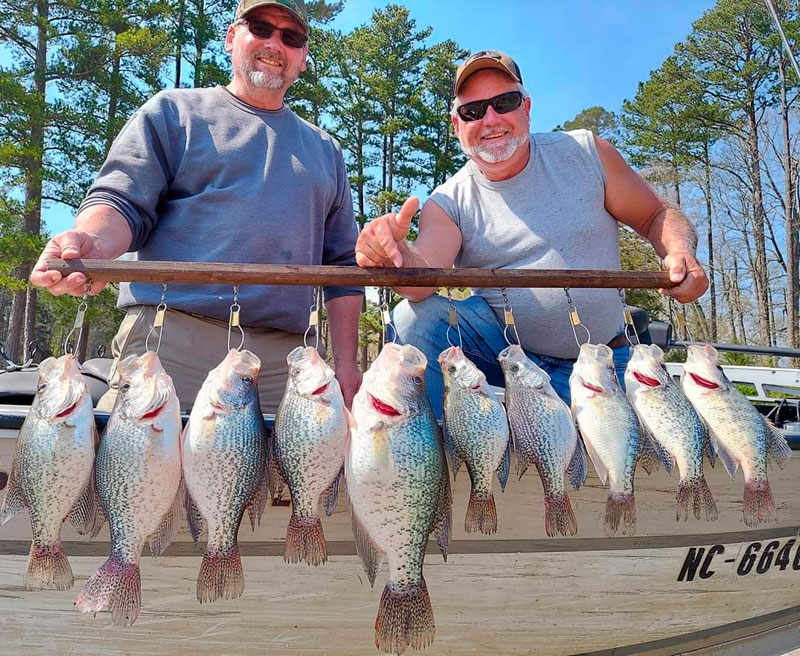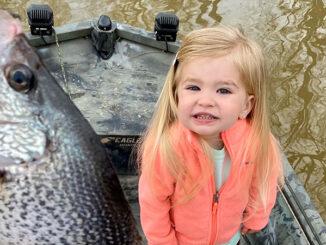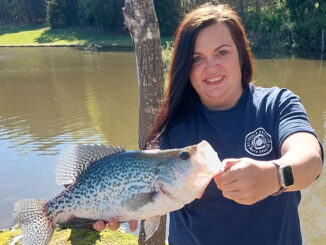
Water levels are the key
During June, the water at Kerr Lake (Buggs Island) can either be in the bushes, out of the bushes, or into the woods depending upon the amount of rainfall. The 300-foot level is normal pool with the water barely in the bushes. The 304-305 foot level is ideal for fishing.
Given flooded lake conditions, Wray (www.fishdocsguideservice.com) stays off the lake.
“I rarely fish Buggs for crappie if the water level exceeds the 305-foot mark,” said Wray. “The woods will be flooded with the crappie spread out among hundreds of trees and bushes and difficult to catch.”
Instead, Wray thrives when the water is either in or out of the bushes, catching from 50 to 100 a day, weighing up to 1 3/4 pounds each.
If the water is in the bushes, Wray targets docks, not bushes, especially those that rest in 8 to 10 feet of water.
“The ideal situation is to have a pontoon boat resting at the side of a dock or boathouse,” said Wray. “That combination provides additional shade and cover and attracts schools of crappie. It’s not uncommon to catch 20 or more slabs from such a place.”
Wray said another crappie magnet is any extended walkway from a dock because its length offers cover over various depths of water.
Find brush piles, rock piles
Wray shoots docks for crappie with ultralight spinning gear and 4-pound line, a technique that enables him to propel 1/8-ounce jigs into the recesses of docks and pontoons and through the smallest crevices and openings around docks. He can reach places other fishermen can’t possibly reach by conventional casting.
When the water is out of the bushes, Wray fishes brush piles, rock piles and laydowns.
“After more than 15 years of crappie guiding, I know of about 500 brush piles resting in water down to 30 feet. So some will be fishable under most low water conditions,” said Wray. “The best top off at about 3 or 5 feet under water, factoring in the water level.”
Wray fishes brush using an ultralight 6-foot rod and a reel filled with 4-pound line. He employs a countdown method with a 1/32-ounce jig, letting the bait free-fall until it reaches the desired depth.
He fishes rock piles in the waters above Clarksville, Va., using the countdown method. Laydowns are wherever he finds them.




Be the first to comment